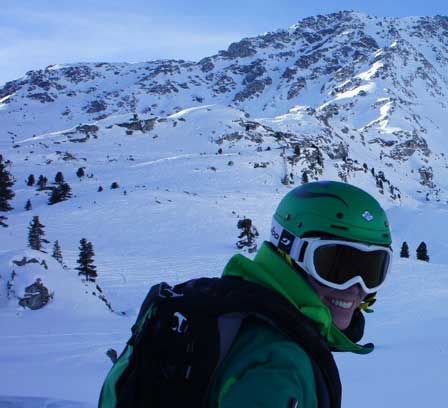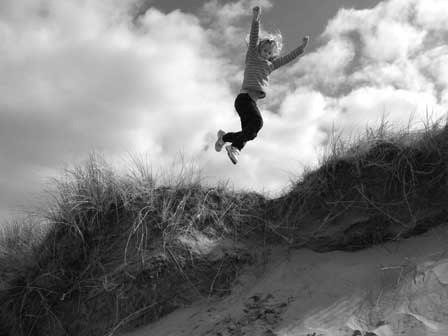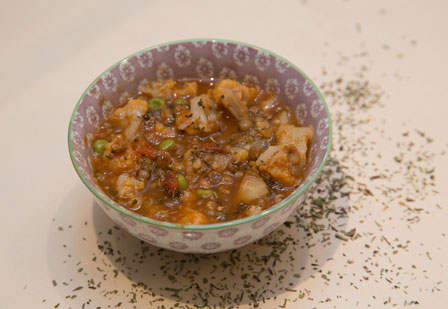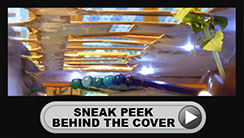Guest Blogs
Knowitall.ch often invites local experts in their field to contribute to their own blogs on our site. This means not only you will benefit from the useful recommendations that we make on our News pages, but you can also profit from some of the great advice and tips that these experts have to make on their favorite subjects. Whilst each of these bloggers has been recommended to us at some point during the evolution of Know-it-all passport and knowitall.ch, obviously we are not able to test out all the suggestions they make on their blogs, nor do we necessarily agree with all their opinions. So if you do find one of their tips useful (or not!), do let us know!
To make these blogs more accessible to you, we have now decided to group them altogether in one section, entitled Guest Blogs, accessible from our main menu bar. We will also post the most recent blogs on the home page of our site in the right hand column.
We are still building up this area of the site, and are looking for bloggers in a number of sections, including Your Home, Travel, and Leisure, so if you feel you have a useful contribution to make in either of these areas, and have the time to submit blog entries approximately every month, then please get in touch!

It was very upsetting to hear about Michael Schumacher’s recent accident on the slopes of Méribel, France and our thoughts are with him and his family.
Since the accident happened, there has been a lot of discussion in the media about helmets for winter sports. Should helmets be compulsory for everyone? Do they really protect against head injuries? After all, Schumacher was wearing one yet he still sustained a serious head injury. In fact, the doctors looking after Schumacher have said that if he hadn’t been wearing a helmet, he would likely have died on the slope where he was injured.
Wearing a helmet is certainly becoming more popular. In Europe, people in the lift queues NOT wearing a helmet are the ones starting to stand out. Taking Switzerland as an example, according to the Swiss Council for Accident Prevention, 87% of skiers and snowboarders wore a helmet on the Swiss pistes during the season 2012/13. This is compared to just 16% 10 years ago.
The absolute risk of sustaining an injury whilst skiing or snowboarding remains very low. There are somewhere between 2-4 injuries for every 1000 days spent on the slopes. This means that happily, most of us will enjoy skiing all of our lives and not sustain any significant injury.
Head injuries make up between 10-15% of skiing related injuries. But serious head injuries, like those sustained by Schumacher are rare. Children have a higher risk of head injury than adults because of their smaller size with a comparatively heavier head, as well as having a more delicate brain.
There is growing evidence about the protective effects of helmets. In 2010, a meta-analysis of the research was published in the Canadian Medical Association Journal and it concluded that skiers and snowboarders wearing a helmet were 35% less likely than those without a helmet to sustain a head injury (i.e. to have bleeding or bruising to the brain if they fall and knock their head).1 However, remember that helmets can’t make a person invincible! Nothing can offer complete protection against high speed impacts – not even the most expensive helmet in the world can reduce the risk of death in such cases.
Previous arguments have been put forward that wearing a helmet increases the risk of significant neck injury, particularly in children who have a higher head to body weight ratio, but recent evidence has shown that this is not the case.1,2 There have also been worries that helmets can affect your hearing and your field of vision. There hasn’t been much research into this but one study showed that warning shouts can still be heard when a helmet is worn3 and another showed no differences in reaction time between people wearing a ski helmet and people wearing a hat.4
So, even though your overall risk of head injury is small when you ski, wearing a helmet on the slopes definitely seems to be a very good habit for all ages and for all ski abilities….and they keep your head warm on a cold day!
Always make sure the helmet fits well, the chin straps are always fastened snugly and that it meets an accepted standard for that particular snow sport. Look for the European Norm type EN 1077 for skiing and snowboarding helmets. Remember that any helmet that has suffered a significant impact needs to be replaced.
If you would like to know more about head injuries and how YOU can help. Why not come on one of our interactive First Aid Course. Take a look on http://www.healthfirst.ch/home/ to find out more and to book online.
Enjoy this winter season and stay safe on the slopes.
This blog was written in conjunction with Dr Michelle Wright - Dr Penny's colleague and co-founder of HealthFirst.
References:
1. Russel K, Christie J, Hagel BE. The effects of helmets on the risk of head and neck injuries among skiers and snowboarders: a meta-analysis. CMAJ2010;182:333-40.
2. Hagel BE, Russel K, Goulet C, Nettel-Aguirre A, Pless IB. Helmet use and risk of neck injury in skiers and snowboarders. Am J Epidemiol2010;171:1334-43.
3. Tudor A, Ruzic L, Bencic I, Sestan B, Bonifacic M. Ski helmets could attenuate the sounds of danger. Clin J Sport Med2010;20:173-8.
4. Ruedl G, Herzog S, Schöpf S, Anewanter P, Geiger A, Burtscher M, et al. Do ski helmets affect reaction time to peripheral stimuli? Wilderness Environ Med
Author's bio
 Dr Penny Fraser MB BS BSc(HONS) MRCS(ENG)
Dr Penny Fraser MB BS BSc(HONS) MRCS(ENG)
Dr Penny is a British-trained Emergency Medicine doctor, who lives in Geneva. She is also the mother of two busy little skiers aged 7 and 8. Along with Dr Michelle Wright and her other colleagues at HealthFirst, she has a passion for delivering health education and First Aid training to the English-speaking community in Switzerland.
HealthFirst provides a range of practical, interactive First Aid courses including a unique Mountain First Aid Course and a First Aid course, obligatory for the Swiss Driver’s Licence, and suitable for anyone from the age of 14.

English and International Curricula – leading up to secondary school
In English-speaking classrooms at international schools throughout Switzerland, students will be following the International Baccalaureate curriculum. This begins at age 5, with the IB Curriculum Primary Years Programme (PYP), designed to equip children up to the age of 11 with all they need to begin the Middle Years Programme (MYP). A large proportion of students continue studying the MYP until the age of 16, when they will have completed their secondary education. Then they will make the decision whether to go on to study the International Baccalaureate Diploma (IB DP) or perhaps to switch to the English curriculum’s A Levels, depending their preferred style of learning.
Secondary school: GCSE or MYP?
Although many students and their parents are aware that there is a choice to be made between the IB DP and A-Levels following secondary school, fewer look critically at the option of MYP versus GCSE. In Switzerland in international schools, many students do continue the MYP until they are 16. However, some students, particularly those looking ahead to a place at an international university, may opt out of the MYP for the more structured iGCSEs. The choice depends not only on the offering of the school, but the future plans of the student and their ability and study habits. Knowing what kind of student you are dealing with can be the difference between success and failure in choosing which curriculum they should follow.

By Debbie Croft, Croft Coaching / Geneva Coach Alliance
I wonder how many of you have been in, or overheard conversations about New Year’s Resolutions, where some speak with great fervour and passion; whilst others say ‘I don’t believe in making resolutions’. It made me consider how a simple date can cause many people to pause and reflect, pull over to the slow lane if you like, even if for 5 minutes; when the rest of the year, we stay in the fast lane.
So, what happens when you pull over to the slow lane or even stop? What do you become aware of?
It forces me to come up above the mental to-do list and juggling hats, as if I am looking down at myself from the canopy of the trees. From this viewpoint, I can see the roles I am playing in my life with detachment, and I can ponder over what is important to me in each of those roles. I actually dedicate time to reflect on questions similar to the ones I have listed below; as opposed to wonder if I have food in the fridge for the next couple of days, work organised, commitments on my radar so I don’t miss a vital playdate, thank you cards written etc etc!

Happy New Year to one and all! I trust you are all on top form and the year has started well.
This year my blog will be dedicated to interviewing leaders and subject matter experts to help promote healthier work life balance. With any luck this will enable us to create better relationships, productivity and performance.
I am convinced that this is an idea that needs to reverberate from the top and therefore will devote this year focusing on just that …. with a little help from my friends!
This January, I have been lucky enough to interview Genpo Roshi, founder of the Big Mind Process www.bigmind.org.
I really hope you enjoy his interview as much as I did.
Best wishes,
Sunita

By Hiba Giacoletto, Healthwise
This is my go-to recipe on days when I don't feel like cooking, especially in winter.
It is a very versatile recipe that uses lentils, your choice of vegetables, tomato sauce and a mix of herbs such as rosemary, thyme and oregano. I also add in some more umami taste to enhance the flavor with some blended dried tomatoes (you can buy them without the oil) as well as a dash of red wine vinegar just before serving. In many traditional lentil recipes you will see lemon or vinegar added at the end of the preparation because it really 'lifts' the flavor while making the lentils easier to digest. Also, make sure you never salt lentil until they are cooked.
I usually use green or brown lentils as they don't become mushy, which I prefer for this stew. Lentils are a great source of protein, fiber, folate, potassium and magnesium while being quite easy and quick to prepare since they don't need soaking like beans.






